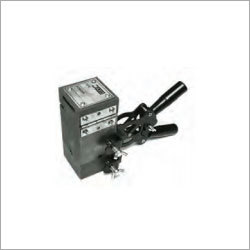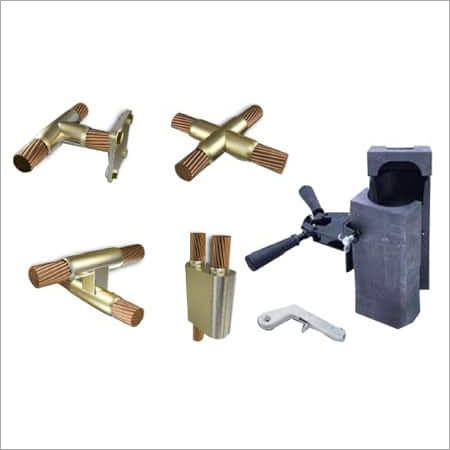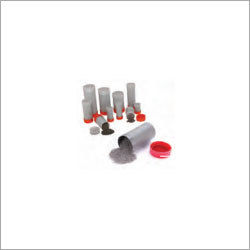
Exothermic Weld Mould
4550 INR/Piece
Product Details:
X
Exothermic Weld Mould Price And Quantity
- 4550 INR/Piece
- 100 Piece
Exothermic Weld Mould Trade Information
- 100 Piece Per Week
- 1 Week
Product Description
An exothermic weld mold, also known as an exothermic welding mould or graphite mold, is a critical component used in the exothermic welding process. Exothermic welding is a method of joining two or more conductive metal parts together by creating a high-temperature chemical reaction. This reaction produces a molten metal that fuses the metal parts into a strong, permanent, and highly conductive joint.
The exothermic weld mold is designed to hold the metal parts securely in place during the welding process and to facilitate the flow of molten metal between them. It plays a crucial role in shaping the final weld and ensuring a reliable electrical and mechanical connection.
Key features of an exothermic weld mold include:
1. Material: Exothermic welding molds are typically made of high-quality graphite, which has excellent heat resistance and electrical conductivity properties. Graphite can withstand the extreme temperatures generated during the exothermic reaction without melting or deforming.
2. Shape and Size: Exothermic weld molds come in various shapes and sizes to accommodate different joint configurations. The mold's shape and dimensions depend on the specific application and the size of the metal parts being joined.
3. Clamping Mechanism: The mold may have a clamping mechanism or other features to securely hold the metal parts in place during the welding process. This ensures that the parts remain properly aligned to form a strong bond.
4. Pouring Channels: The mold is designed with channels and openings to allow the molten metal to flow smoothly and fill the joint between the metal parts.
5. Reservoirs: Some molds may have reservoirs or wells for holding the starting powder, which is an essential component in the exothermic welding process. The starting powder consists of a mixture of powdered metals and other compounds that initiate the exothermic reaction when ignited.
6. Durability: Exothermic welding moulds are built to be durable and withstand multiple uses, provided they are properly maintained and cleaned after each use.
The basic steps of the exothermic welding process using the mold are as follows:
1. The metal parts to be joined are cleaned and placed into the exothermic weld mold.
2. The starting powder is poured into the mold's designated reservoir or sprinkled on top of the metal parts.
3. An ignition source is used to initiate the exothermic reaction, which produces intense heat, melting the metal parts and the starting powder.
4. The molten metal flows into the joint, filling the space between the metal parts and creating a strong bond as it solidifies.
5. After the reaction is complete, the mold is opened, and the solidified metal is removed.
FAQ:
Q. What is an exothermic weld mould?
Ans: An exothermic weld mold, also known as an exothermic welding mold or graphite mold, is a specialized container made of high-quality graphite used in the exothermic welding process. It holds the metal parts to be joined securely in place and facilitates the flow of molten metal between them during the welding reaction.
Q. What is the purpose of using a graphite mold in exothermic welding?
Ans: Graphite molds are used in exothermic welding because graphite has excellent heat resistance and conductivity properties. It can withstand the extremely high temperatures generated during the exothermic reaction without melting or deforming, ensuring a safe and effective welding process.
Q. Are exothermic welding moulds reusable?
Ans: Yes, in most cases, exothermic welding molds are designed to be reusable. After the welding process is complete, the solidified metal is removed from the mold, and the mold can be cleaned and prepared for the next welding job. Proper maintenance and cleaning are essential to ensure the longevity and performance of the mold.
Q. Do I need different molds for different joint configurations?
Ans: Yes, exothermic welding molds come in various sizes and shapes to accommodate different joint configurations. The mold must match the specific joint requirements to ensure a proper and secure connection.
Q. Can I make my own exothermic welding mold?
Ans: It is generally not recommended to make your own exothermic welding mould unless you are a trained professional and have access to the appropriate materials and equipment. Exothermic welding requires precision and adherence to safety standards, and using a properly manufactured and tested mold is crucial for a successful and safe weld.
Q. How do I choose the right size of the mold for my application?
Ans: Selecting the right mold size depends on the size and configuration of the metal parts being joined. The mold should comfortably accommodate the parts while leaving sufficient space for the molten metal to flow and fill the joint properly. If you're unsure about the appropriate mold size, consult with a qualified exothermic welding supplier or technician.
Q. Can I repair a damaged exothermic welding mold?
Ans: In some cases, minor damage to the mold may be repairable, but it is essential to follow the manufacturer's guidelines for repairs or consult with an expert. However, if the mold is significantly damaged or compromised, it is safer to replace it to avoid any potential welding issues or safety hazards.
Q. How do I store exothermic welding molds when not in use?
Ans: Store exothermic welding moulds in a clean and dry environment, away from excessive heat or direct sunlight. Ensure they are protected from physical damage and corrosive substances. Following proper storage guidelines will help extend the mold's lifespan and maintain its effectiveness.
Q. Are there different types of exothermic welding molds for different metals?
Ans: Exothermic welding molds are generally designed to work with a wide range of conductive metals, including copper, steel, bronze, and others. As long as the mold is compatible with the metal being used, it can be used for exothermic welding.
Q. Can exothermic welding moulds be used with other welding techniques?
Ans: Exothermic welding molds are specifically designed for exothermic welding, which is a unique welding process. They are not compatible with other welding techniques, such as arc welding or resistance welding, as these processes use different equipment and principles.
Enter Buying Requirement Details
 English
English Spanish
Spanish French
French German
German Italian
Italian Chinese (Simplified)
Chinese (Simplified) Japanese
Japanese Korean
Korean Arabic
Arabic Portuguese
Portuguese



